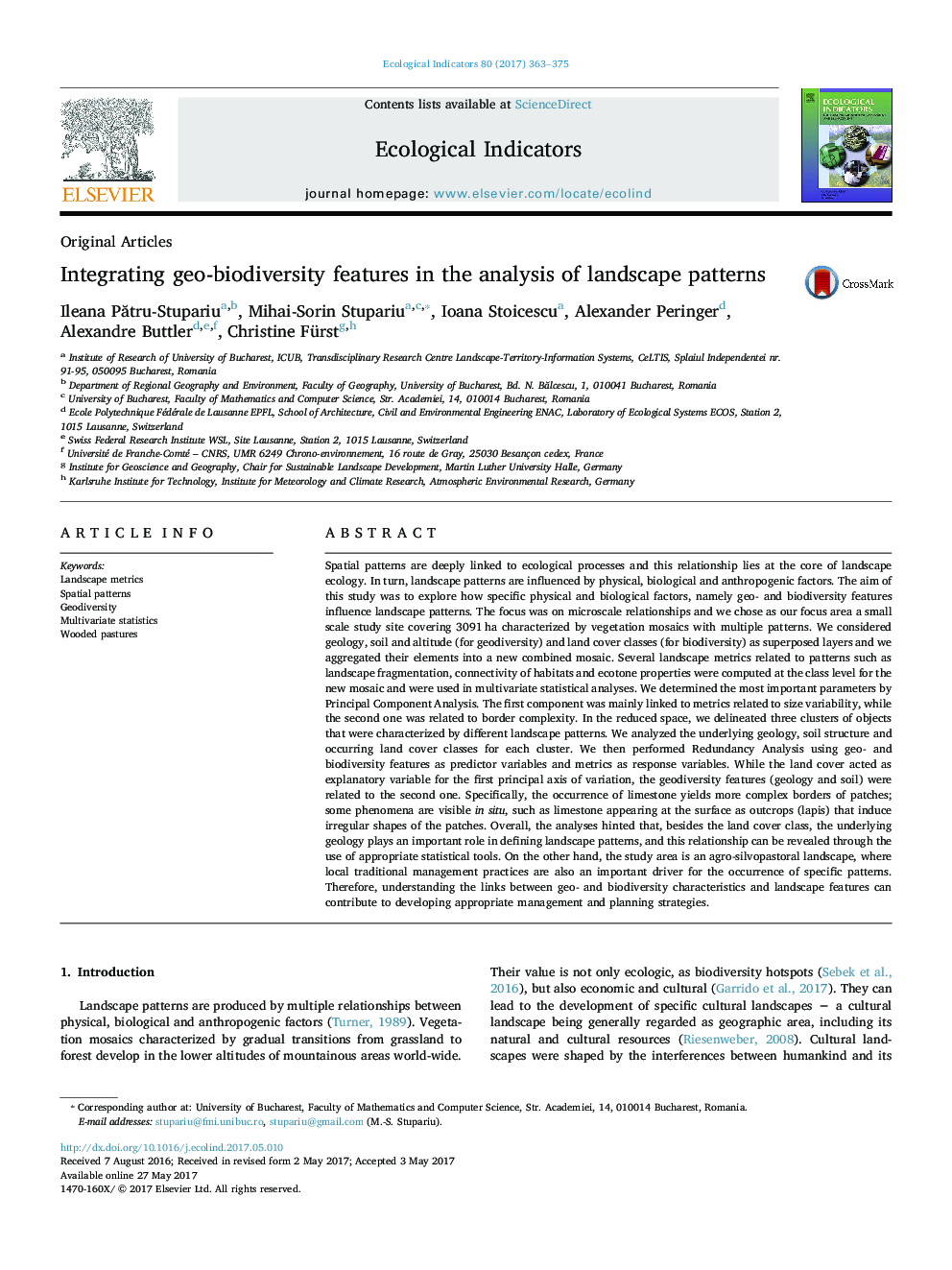| کد مقاله | کد نشریه | سال انتشار | مقاله انگلیسی | نسخه تمام متن |
|---|---|---|---|---|
| 5741399 | 1617122 | 2017 | 13 صفحه PDF | دانلود رایگان |
- Investigate microscale links between geobiodiversity features and landscape patterns.
- Identify the most representative landscape metrics for vegetation mosaics with multiple patterns by using multivariate statistics.
- Explain the first axes of variation in relationship to the occurrence of certain geobiodiversity features.
Spatial patterns are deeply linked to ecological processes and this relationship lies at the core of landscape ecology. In turn, landscape patterns are influenced by physical, biological and anthropogenic factors. The aim of this study was to explore how specific physical and biological factors, namely geo- and biodiversity features influence landscape patterns. The focus was on microscale relationships and we chose as our focus area a small scale study site covering 3091Â ha characterized by vegetation mosaics with multiple patterns. We considered geology, soil and altitude (for geodiversity) and land cover classes (for biodiversity) as superposed layers and we aggregated their elements into a new combined mosaic. Several landscape metrics related to patterns such as landscape fragmentation, connectivity of habitats and ecotone properties were computed at the class level for the new mosaic and were used in multivariate statistical analyses. We determined the most important parameters by Principal Component Analysis. The first component was mainly linked to metrics related to size variability, while the second one was related to border complexity. In the reduced space, we delineated three clusters of objects that were characterized by different landscape patterns. We analyzed the underlying geology, soil structure and occurring land cover classes for each cluster. We then performed Redundancy Analysis using geo- and biodiversity features as predictor variables and metrics as response variables. While the land cover acted as explanatory variable for the first principal axis of variation, the geodiversity features (geology and soil) were related to the second one. Specifically, the occurrence of limestone yields more complex borders of patches; some phenomena are visible in situ, such as limestone appearing at the surface as outcrops (lapis) that induce irregular shapes of the patches. Overall, the analyses hinted that, besides the land cover class, the underlying geology plays an important role in defining landscape patterns, and this relationship can be revealed through the use of appropriate statistical tools. On the other hand, the study area is an agro-silvopastoral landscape, where local traditional management practices are also an important driver for the occurrence of specific patterns. Therefore, understanding the links between geo- and biodiversity characteristics and landscape features can contribute to developing appropriate management and planning strategies.
Journal: Ecological Indicators - Volume 80, September 2017, Pages 363-375
